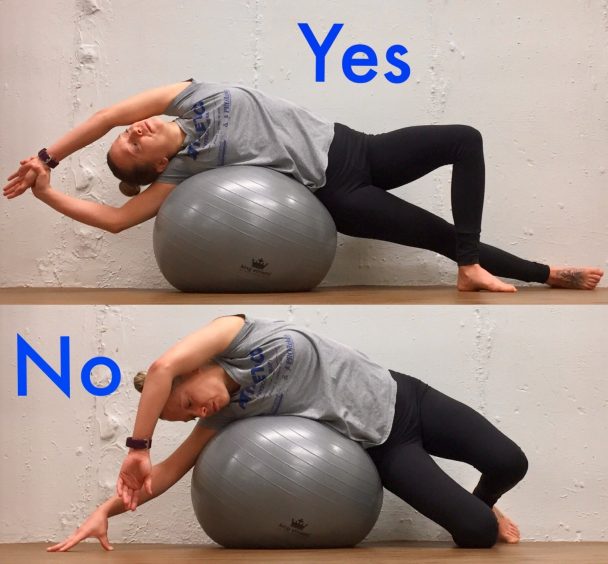
Stretch of the Week: Side Stretch with Pilates Ball
Leave a CommentThe second stretch for December is called the Side Stretch with Pilates Ball. This stretch will impact the latissimus dorsi, lateral trunk and hip muscles. This stretch is also a bit of a core stabilizer.
Just like the first week of December, you will need at least a 55 cm Pilates ball to perform this stretch. It is also important to make sure that you have some wall space for this stretch. If you have trouble getting up and down from the floor, please skip this week’s stretch.
How to perform:
- Find a place you can sit in front of a wall. Have the Pilates ball right next to you, resting against the wall. Place your right arm on the ball so that you are touching the ball with the right side of your body, from armpit to hip. Then push with the legs to roll on top of the ball. The wall is there to support you and the ball so you do not roll backwards. You want the ball to remain in the area between the armpit and hip throughout the stretch.
- Straighten out your bottom leg. Bend your top leg and place the foot in front of the bottom knee as shown in the “yes” photo. This will provide more balance support. Bring the top arm up and over by the ear to stretch the left side of your body. Grab the top wrist with the bottom hand and gently pull for more intense stretch. Keep the belly button pressed to the spine to keep the core engaged.
*Do not just lay over the ball as shown in the “no” photo. The body is collapsed too much and you may roll off of the ball.
- Hold this position for 3-5 minutes. Then slowly come back to the floor by bending the knees. Repeat on the other side.
 Interested in learning more? Email me at rachel.lackowski@athletico.com
Interested in learning more? Email me at rachel.lackowski@athletico.com
The Athletico blog is an educational resource written by Athletico employees. Athletico bloggers are licensed professionals who abide by the code of ethics outlined by their respective professional associations. The content published in blog posts represents the opinion of the individual author based on their expertise and experience. The content provided in this blog is for informational purposes only, does not constitute medical advice and should not be relied on for making personal health decisions.
